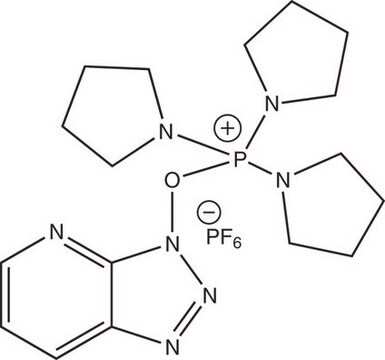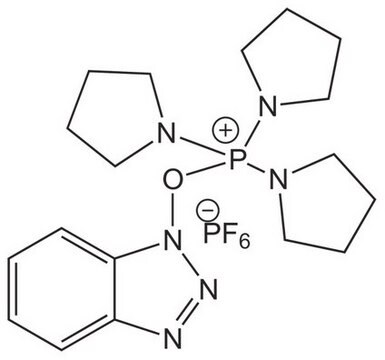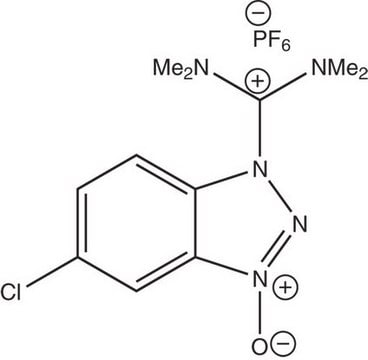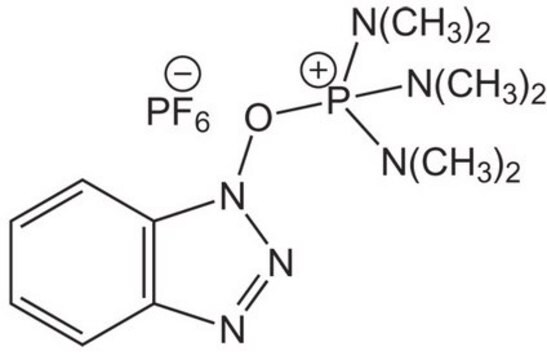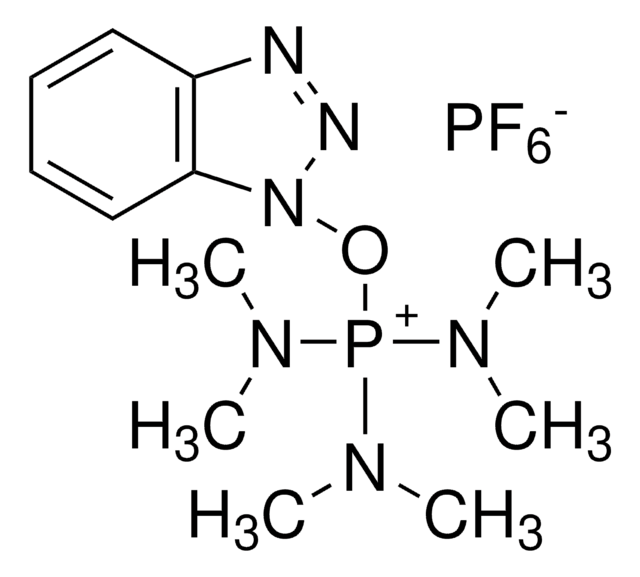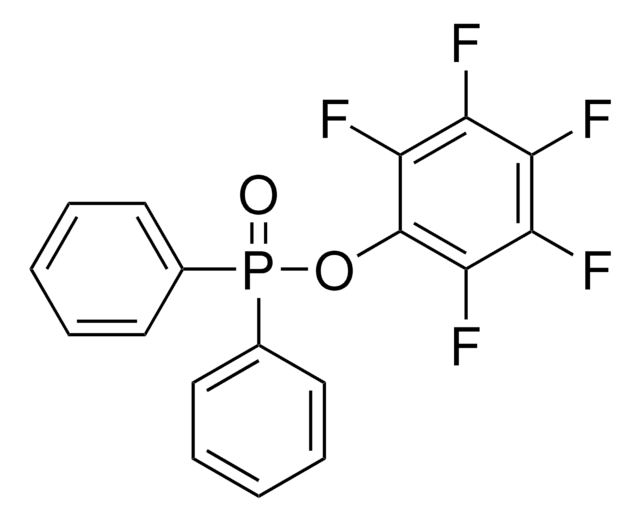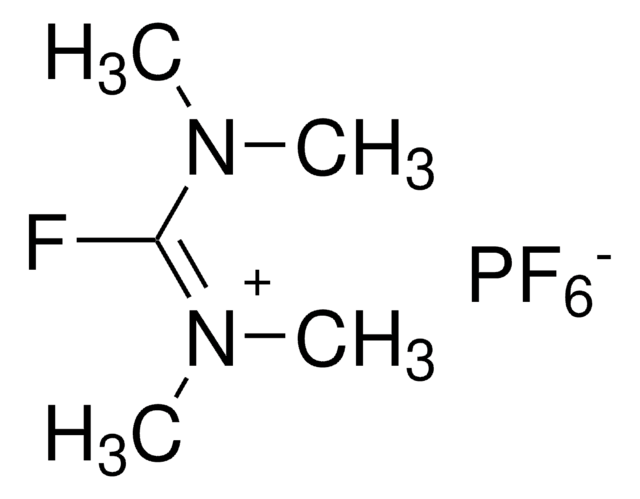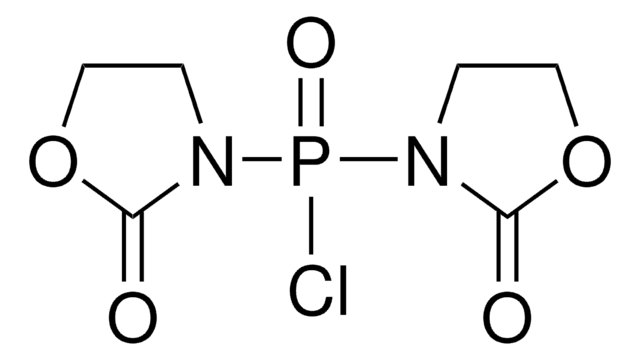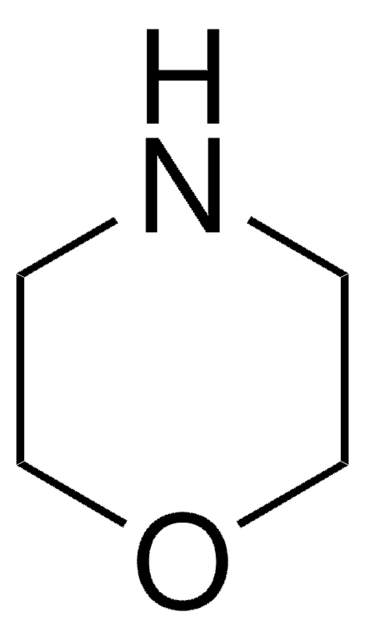535303
(7-Azabenzotriazol-1-yloxy)tripyrrolidinphosphoniumhexafluorphosphat
96%, for peptide synthesis
Synonym(e):
PyAOP
About This Item
Empfohlene Produkte
product name
(7-Azabenzotriazol-1-yloxy)tripyrrolidinphosphoniumhexafluorphosphat, 96%
Assay
96%
Eignung der Reaktion
reaction type: Coupling Reactions
mp (Schmelzpunkt)
163-168 °C (lit.)
Anwendung(en)
peptide synthesis
Lagertemp.
−20°C
SMILES String
F[P-](F)(F)(F)(F)F.C1CCN(C1)[P+](On2nnc3cccnc23)(N4CCCC4)N5CCCC5
InChI
1S/C17H27N7OP.F6P/c1-2-11-21(10-1)26(22-12-3-4-13-22,23-14-5-6-15-23)25-24-17-16(19-20-24)8-7-9-18-17;1-7(2,3,4,5)6/h7-9H,1-6,10-15H2;/q+1;-1
InChIKey
CBZAHNDHLWAZQC-UHFFFAOYSA-N
Suchen Sie nach ähnlichen Produkten? Aufrufen Leitfaden zum Produktvergleich
Verwandte Kategorien
Anwendung
Cyclic RGC pentapeptides for functionalization through click chemistry
Fluorescent glucose bioprobes
ReactIR™ flow cell
Reagent for:
Disulfide bond engineering
Heteroaryl ether synthesis
Optimization of conformational constraint on non-phosphorylated cyclic peptide antagonists of the Grb2-SH2 domain
Rechtliche Hinweise
Signalwort
Warning
H-Sätze
Gefahreneinstufungen
Eye Irrit. 2 - Skin Irrit. 2 - STOT SE 3
Zielorgane
Respiratory system
Lagerklassenschlüssel
11 - Combustible Solids
WGK
WGK 3
Persönliche Schutzausrüstung
dust mask type N95 (US), Eyeshields, Gloves
Hier finden Sie alle aktuellen Versionen:
Besitzen Sie dieses Produkt bereits?
In der Dokumentenbibliothek finden Sie die Dokumentation zu den Produkten, die Sie kürzlich erworben haben.
Kunden haben sich ebenfalls angesehen
Unser Team von Wissenschaftlern verfügt über Erfahrung in allen Forschungsbereichen einschließlich Life Science, Materialwissenschaften, chemischer Synthese, Chromatographie, Analytik und vielen mehr..
Setzen Sie sich mit dem technischen Dienst in Verbindung.